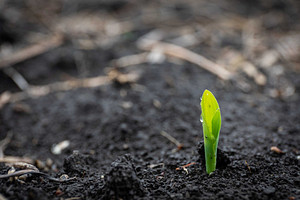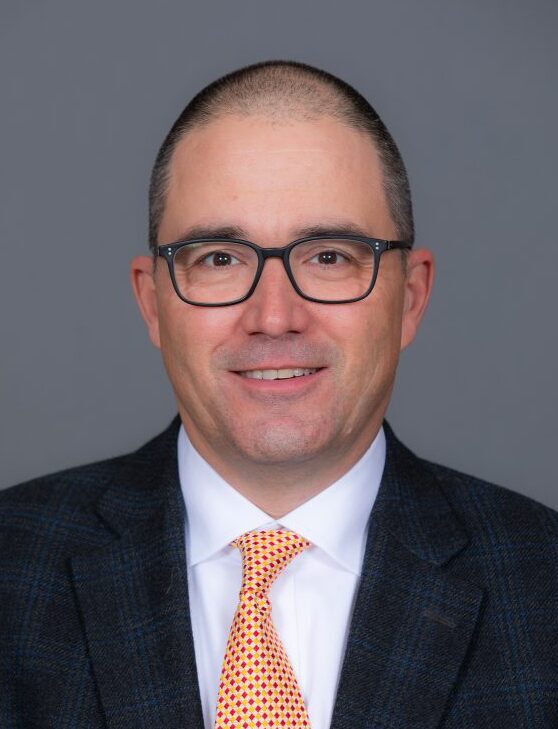
By Dan Looker, IAWA Writer
Iowans have heard a lot about nitrogen fertilizer in recent years. Nitrogen and phosphorus are the two key nutrients that the state is working to manage better through the Iowa Nutrient Reduction Strategy.
Nitrogen is one of earth’s most important elements, and it plays a key role in plant growth. Phosphorus is important for plants to develop fruits and store carbohydrates.
But in water, both nutrients can cause growth of algae. When that algae dies and decays, it lowers oxygen in water bodies. A large “dead zone” of oxygen-depleted water in the Gulf of Mexico is a real-world example of this process. It’s also a major reason why the federal government has asked states in the Mississippi River Basin to reduce nitrogen loss by 45 percent and phosphorus loss by 29 percent.
Nitrogen: One key to feeding the world
You’re breathing nitrogen as you read this – it makes up 78% of our atmosphere. As a key part of proteins and DNA, nitrogen is in every cell in your body. Nitrogen (N) is also one of three top nutrients for plants, along with phosphorous (P) and potassium (K).
Plants need nitrogen for green, leafy growth, but it has to be converted to a more available form called nitrates to be used. Lightning in thunderstorms and bacteria in the soil on plant roots convert nitrogen to nitrates and ammonia.
Nitrogen fertilizer fueled the green revolution of the 20th century. Iowa native and Nobel Peace Prize winner Norman Borlaug saved a billion people from starvation by developing high-yielding wheat that uses nitrogen efficiently. Decades before Borlaug’s work, two German chemists developed an industrial process to turn nitrogen in the air into anhydrous ammonia, which is still the cheapest nitrogen fertilizer. Those big, white tanks on wheels that you see at co-ops all over Iowa are used for anhydrous ammonia.
“For cereals—corn, wheat and rice—nitrogen is the most limiting nutrient by far and away,” said Dr. Mike Castellano, soil science professor at Iowa State University. “Human health would suffer from lack of protein.”
This progress in food production also brings challenges. The nutrients P and K tend to stick to soil, but nitrate dissolves easily and can slip below the roots of crops to reach groundwater and streams. Additionally, if soils get waterlogged from too much rain, bacteria turn nitrogen fertilizer back into a gas that’s released in to air.

Iowa’s best soils are loaded with natural nitrogen—in many cases with more than 10,000 pounds per acre, according to Dr. Castellano. But most of that is locked up in soil organic matter. Only a tiny fraction is freed up by soil microbes each year, so farmers often apply nitrogen fertilizer.
“The optimum rate can vary from 0 to 350 pounds per acre,” Dr. Castellano said. Determining the right rate is tricky, since weather—temperature and moisture—affects how microbes metabolize nitrogen.
Dr. Castellano and other researchers are working to fine tune exactly how much fertilizer farmers need to apply each year through The Nitrogen Initiative. The research will reduce nutrient loss into water, while saving farmers money on fertilizer. While the escape of unconsumed nitrogen into streams remains a challenge, only a small fraction of that nitrogen comes from applied fertilizer.
A corn crop uses at least two-thirds of nitrogen fertilizer, and some is lost to the atmosphere. Most nitrate loss occurs when crops are not vigorously growing. That’s why some farmers have begun to plant cover crops like cereal rye. In fall and spring, rye captures nitrate in its leaves and roots, which later decay and release nitrogen for use by the next crop. This process has the added benefit of rebuilding humus, or soil organic matter.
Cover crops are just one of several farm practices promoted by the Nutrient Reduction Strategy to capture nitrogen and reduce nutrient loss.
Phosphorus goals nearly reached
The other target of the Nutrient Reduction Strategy is phosphorus. Phosphorus may get less public attention than nitrogen, partly because it doesn’t leach into groundwater and streams as easily as nitrogen. Farmers have also made significant progress in controlling it.
According to combined Iowa State University and Iowa Department of Natural Resources (DNR) data, Iowa has nearly achieved the nonpoint source goal of 29 percent reduction in phosphorus loss in just the first decade of the Iowa NRS.
The key to preventing phosphorus loss is preventing erosion.

“We’ve been working at soil erosion protection for decades,” said agricultural engineer Matt Helmers, who heads ISU’s Iowa Nutrient Research Center. “A lot of phosphorus may be transported with sediment.”
Most of the phosphorus in Iowa’s streams – about 80% – comes from nonpoint sources like farm fields, according to the Iowa NRS. Controlling phosphorus isn’t a simple challenge. It’s found in stream beds and stream banks, and it can sometimes leach into groundwater.
“I would not say phosphorus is less of a challenge than nitrogen. I think it’s a different challenge,” Helmers said, adding that no-till is one practice Iowa farmers should continue to expand.
Practicing no-till helps keep soil in place, and it’s becoming more popular on Iowa farms. Every year, 600,000 more acres are added to no-till management, according to the Iowa Nutrient Research and Education Council.
IAWA Executive Director Sean McMahon says Iowa farmers have made substantial progress in reducing soil erosion and phosphorus losses through other practices, too, including fertilizer management, cover crops, buffers, grassed waterways, and terraces.
“Phosphorus loading in Iowa surface waters has been declining by about 2% per year thanks to farmers implementing soil conservation practices and better nutrient stewardship,” McMahon said. “I’m confident that the unprecedented partnerships, investments, momentum, and alignment that we have in place thanks to the Strategy will enable us to fully achieve that goal within the next decade.”
Posted on 03/14/2023
